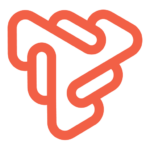In this era of data-driven decision-making, artificial intelligence (AI) and predictive analytics have become vital tools across various industries. One such area where these technologies are making a significant impact is in the hiring process. This article will explore both concepts, their benefits, challenges, and how to adopt them effectively.
Defining AI and Predictive Analytics
Artificial Intelligence (AI), in the simplest terms, is a branch of computer science that aims to create machines capable of mimicking human intelligence. In the hiring process, AI can automate repetitive tasks such as sorting through resumes, scheduling interviews, and even conducting initial screenings through chatbots.
Predictive Analytics, on the other hand, is a form of advanced analytics that uses current and historical data to make predictions about future events. In hiring, it can help identify patterns in successful hires and use this information to predict the success of potential candidates.
The Benefits of Using AI & Predictive Analytics in the Hiring Process
AI and predictive analytics can revolutionize the hiring process in several ways:
- Faster Time-to-Hire: The synergy between AI and predictive analytics accelerates the recruitment timeline by automating repetitive tasks, identifying top candidates faster, and streamlining the decision-making process. Organizations leveraging this synergy experience a significant reduction in time-to-hire, ensuring they secure top talent before the competition.
- Improved Quality of Hires: Predictive analytics, powered by AI, facilitates a more comprehensive evaluation of candidates based on historical success factors. By identifying the characteristics that lead to successful hires, recruiters can proactively seek out candidates with similar attributes. This targeted approach results in a higher quality of hires, as candidates are more likely to excel in their roles.
- Cost Savings: The efficiency gained through AI and predictive analytics directly translates into cost savings for organizations. Automated processes reduce the need for manual labor, while data-driven decision-making minimizes the risk of making costly hiring mistakes. Overall, the synergy contributes to a more cost-effective recruitment process.
- Strategic Talent Acquisition: The data-driven insights provided by predictive analytics empower organizations to take a strategic approach to talent acquisition. Recruiters can identify emerging trends, anticipate skill gaps, and align their recruitment strategies with the long-term goals of the organization. This strategic alignment ensures that the talent acquired meets immediate needs and contributes to future growth and success.
Uncovering Challenges & Risks
Despite the clear benefits, there are potential pitfalls and ethical concerns to consider:
- Algorithmic Bias: If the data used to train the AI system is biased, the system itself can perpetuate these biases, leading to unfair hiring practices.
- Over-reliance on Technology: While AI and predictive analytics can assist in the hiring process, they should not replace human judgment and intuition.
- Privacy Concerns: Using AI and predictive analytics requires handling sensitive data, which can raise privacy concerns if not managed correctly.
Adopting and Implementing AI & Predictive Analytics
Adopting these technologies involves careful planning and execution:
- Choosing the Right Tools: Not all AI and predictive analytics tools are created equal. It’s important to choose tools that align with your company’s needs and values.
- Training Your Team: Your team needs to understand how to use these tools effectively and ethically. This includes understanding how to interpret the data and how to mitigate potential biases.
- Ensuring Transparency: Make sure your hiring process remains transparent. Candidates should know if and how AI and predictive analytics are being used in the hiring process.
AI and predictive analytics hold great promise for improving the hiring process. However, like any tool, they must be used wisely and ethically. With the right approach, these technologies can help companies make more informed and equitable hiring decisions. The combination of AI’s automation capabilities and predictive analytics’ data-driven insights results in a recruitment process that is more efficient, precise, and strategic. Organizations that embrace this synergy gain a competitive edge in attracting, assessing, and securing top talent in a rapidly evolving job market.
As technology continues to advance, the synergy between AI and predictive analytics will undoubtedly play a pivotal role in defining the future of recruitment. It’s not merely a trend; it’s a transformation that empowers organizations to make smarter, faster, and more informed hiring decisions, ultimately contributing to their overall success in the talent acquisition arena.
